Dude, My Dog’s Chasing Its Tail Like Crazy! What’s Up?
A. Brief overview of tail-chewing in puppies
The bond between people and their canine pals is a mix of loyalty, love, and occasional intrigue. Tail-chewing can puzzle dogs owners. It’s important to understand that puppies often chew on their tails. Investigating why they do this and how to help is crucial in solving this odd behavior mystery. Our animal buddies communicate in ways that enthrall and confound us. The connection between people and dogs is complex and fascinating. Tail-chewing by dogs can be a surprising behavior for pet owners. It may leave them puzzled about their furry friend’s reasons behind it. As we start to solve why dogs chew their tails, we’re not just figuring out one issue. We’re exploring how it affects their well-being.
Dogs’ tail-chewing conduct regularly confounds pet owners. Exploring reasons and treatments is crucial for pets’ health. It may seem ordinary.
A most important contributing component to tail-chewing is underlying scientific situations. Puppies may chew their tails if they have dermatitis, allergies, or infections. A vet needs to thoroughly check to find any health issues and choose the best treatment plan.
Another noteworthy element is tension and boredom. Puppies, like people, can feel tension and boredom. Biting their tails might help them cope. To combat this, create enriching surroundings with toys. Conduct interactive play to reduce anxiety and boredom. Regular workout can also help.
Irritants and allergic reactions actually have a role in tail-chewing behavior. Certain foods, items, or fleas can cause dogs to feel itchy, leading them to chew on their tails. Identifying these allergens is vital. Using the right flea prevention is crucial in these cases.
Stress and boredom are two other crucial elements in this canine conduct. Dogs can feel similar emotions to humans. Biting their tails can be a way for them to cope. Create a fun environment with engaging toys and activities to reduce anxiety. Regular exercise helps too.
Tail-chewing behavior also is extensively motivated via hypersensitive reactions and irritants. Dogs can get itchy from certain foods, substances, or fleas, which might make them want to bite. To handle such instances, focus on removing allergic reactions and improving flea control.
If a health issue is found, quick medical care is important. Follow vet tips, give pills to reduce discomfort, and stop tail-chewing.
Changing one’s conduct is also important. Combat boredom and strain with regular exercise, interactive
toys, and positive reinforcement. This redirects your dog’s focus from tail-chewing.
Removing potential irritants from the space is crucial to create a dog-friendly environment. Regular grooming, tidy living areas, and balanced food improve health and prevent tail-chewing.
Understanding tail-chewing motives gives puppy owners confidence. They can ensure pet health. Tail-chewing behavior may be explained by environmental adjustments and targeted behavioral changes. Clinical therapy can foster a bond between pet and owner.
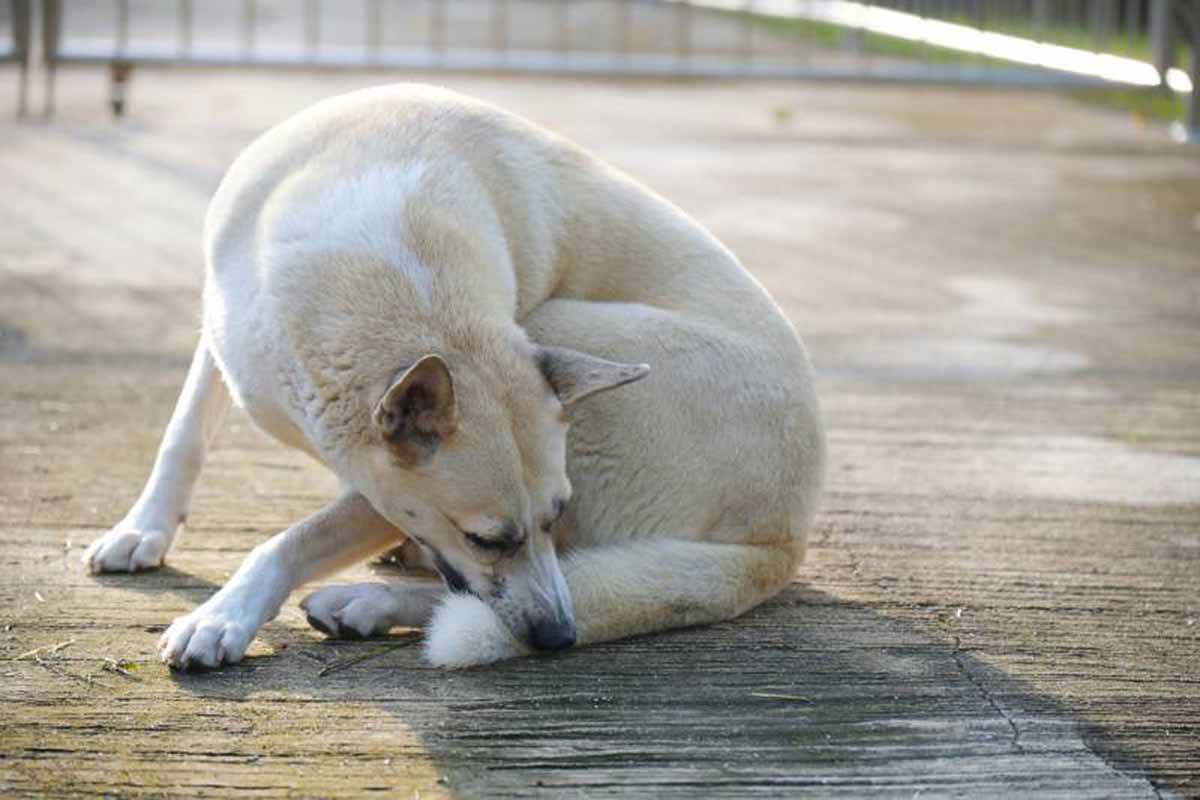 Credit- Shutterstock[/caption]
Credit- Shutterstock[/caption]
B. Importance of expertise, reasons and solutions
Dogs Tail-Chewing Causes: Comprehending the Fundamental Elements. Dogs sometimes chew their tails, which can worry pet owners. Understanding why this happens is key to solving the problem. Understanding why dogs chew their tails is vital to solving this mystery.
Health Concerns: Dogs may additionally chew their tails if they have allergies, rashes, or ailments. When a dog has a hypersensitivity, they may get itchy and find solace in chewing on their tails.
The significance of a veterinary exam can’t be overstated. An intensive exam is crucial to check for any health issues and get a clear picture of the dog’s health.
Stress and Boredom: When dogs feel disillusioned or bored, they may start chewing on their tails to cope. To help your dogs stop chewing its tail, it’s crucial to recognize when it feels unhappy or bored. Use toys, playtime, and exercise to distract your pet from this behavior.
Irritants and Allergies: Certain foods, items, or fleas can make a dog itchy and chew on its tail. Determining those allergens is vital to a successful hypersensitive reaction management.
Careful monitoring and preventive measures are part of dealing with allergies. This entails maintaining your home tidy, giving yourself frequent grooming, and putting flea prevention strategies into practice.
Pet owners are ready to act wisely when they know about these problems. To treat dogs who chew their tails, a complete approach is needed. This includes prompt vet care, enhancing the dog’s environment, and eliminating allergies. Customize answers for unique canine needs. Help pets live longer, healthier lives.
Social factors: Pets are social beings, similar to people. Becoming lonely would possibly have a giant effect on their movements. When pets chew on their tails, it could mean they are in pain or trying to cope when they feel sad. Address loneliness by organizing tasks and fostering social connections. Offer toys for stimulation.
I find it interesting how our puppies’ movements are shaped by social dynamics. Recognizing and resolving these issues enhances quality of life. It strengthens human-animal bonds. Have you ever attempted any techniques to assist your puppy that is lonely?

Remedies for Tail-Chewing: Promoting Health and Happiness in Furry Friends
Dogs chewing their tails need a mix of changes, training, and medicine. Pet owners can help their dogs be healthier and happier by following these tips.
Medical Intervention: Identifying and promptly treating health issues is crucial. Seek medical attention promptly for dermatitis, allergies, or infections to prevent discomfort. Immediate care can stop tail-chewing behavior.
Taking Prescription Drugs and Advice from Veterinarians: Working with a veterinarian is essential. To solve tail-chewing fitness issues, follow the vet’s advice and use prescribed medication.
Furthermore, bacterial or fungal illnesses can make puppies feel uncomfortable. This might cause them to bite their tails to find relief. Understanding the specific characteristics of the sickness is crucial for targeted treatment. This highlights the need for expert veterinary care.
Preventive Steps for Dealing with Stress and Boredom
It’s critical to understand the emotional components that contribute to tail-chewing. Proactive efforts reduce strain. They create an enticing workspace by addressing the root cause.
Canine mentality functions exceptional whilst its miles are engaged and stimulated. Regular exercise is good for your dog’s health and can help them release pent-up energy. This can reduce the risk of stress-related behaviors like biting their tail. Introducing many toys can keep the dog mentally active and improve its behavior. Some toys that promote problem-solving and interactive play can encourage a positive attitude.
Dogs love staying active both mentally and physically. That’s why they need regular exercise, fun toys, and positive reinforcement. The canine’s awareness is.
Considering Nutrition: The adage “you are what you eat” is applicable to both humans and our animal partners. Diet affects skin health, from coat condition to itching. Improve skin health with a balanced diet rich in antioxidants and omega-3. Eat well for a shiny coat and healthy skin.
The use of supplements can substantially enhance ache management. Omega-3 fatty acids can reduce inflammation and improve skin condition. It is crucial to see a veterinarian to check your puppy’s personal desires and create a customized healthy eating plan that meets the ones demands.
Regular Exams and Observations: Preventive care for pets starts off evolving with habitual veterinary appointments. Those check-ups include shots and ensure your pet’s overall health is checked thoroughly. Veterinarians can find problems early, like dental health and skin conditions.
A change in behavior may often indicate hidden health problems. It’s like having a window into your puppy’s wellbeing while you study their behavior. Any alternate from their typical habitual is probably the purpose for the problem. Recognize how their mental state affects behavior, just like physical symptoms.
A proactive technique to preserve your puppy’s health is to adapt procedures appropriately. Their well-being is taken care of by making changes to where they live, what they eat, and how they stay engaged. Being alert and flexible to those changes is crucial.
In the end, it boils down to providing our dogs with the best care possible. A great life for them involves good food, regular vet check-ups, and keeping a close eye on them. How do you usually care for your puppy’s food and medical needs every day?
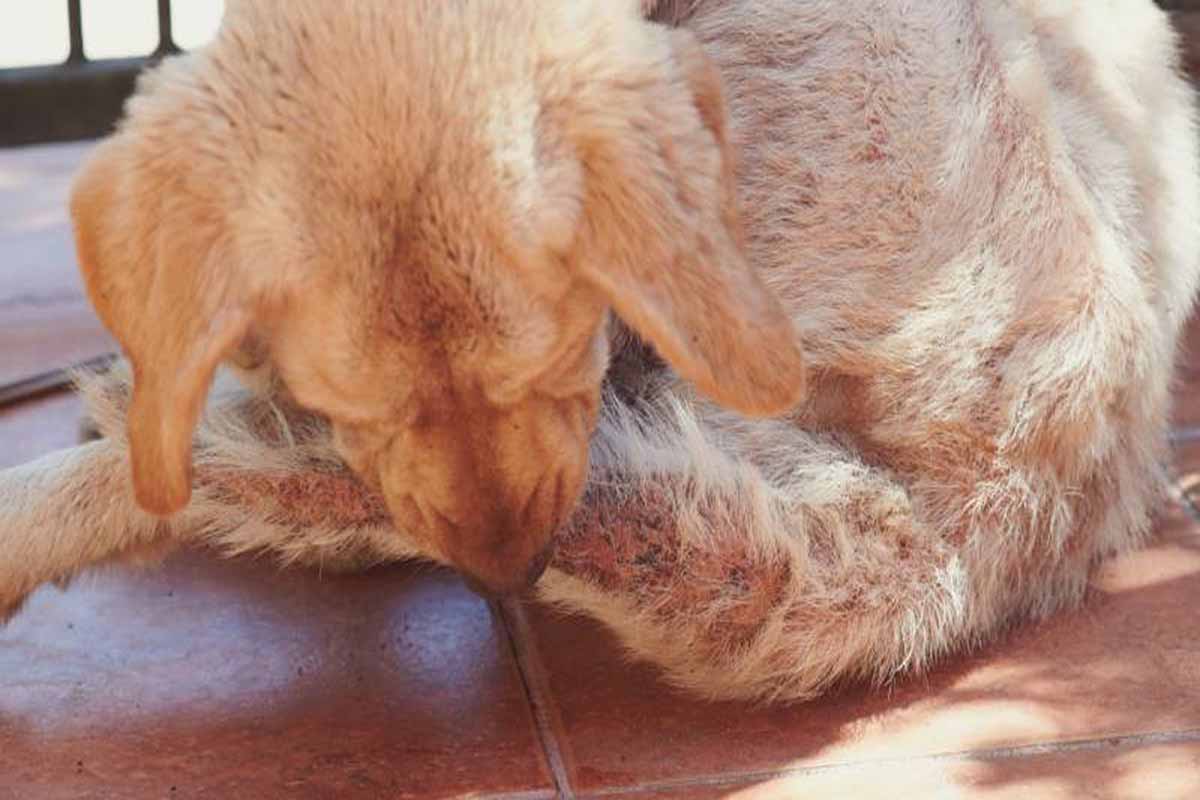 Credit- Shutterstock[/caption]
Credit- Shutterstock[/caption]
Case Studies and Success Stories
To understand dogs tail-chewing, observe global instances showing reasons and successful treatments. It’s essential. Success stories are a result.
MedicalMarvel:Dermatitis and Allergies
Meet Max, a playful Labrador Retriever who loves to chew on his tail. Max’s struggling owners took him to the vet to address his rashes and allergies. A comprehensive assessment recognized hypersensitive reactions inflicting him issue.
Solution: Max’s owners chose a special plan to help Max’s skin issues after talking to the vet. With a prompt scientific treatment and changes in Max’s environment, he recovered splendidly. Max stopped chewing his tail and returned to being a lively dogs.
Elimination of Allergens: Fleas and Food Sensitivity
Case Study: Charlie, a mixed breed, battled continual tail-chewing despite regular grooming. Upon extra inspection, fleas and other dietary sensitivities were determined.
Charlie’s proprietors used a two-pronged method as a solution. Strict rules were made to stop fleas, and they watched carefully what Charlie ate. As soon as they found and removed allergens, the tail-chewing events decreased significantly. Charlie’s accomplishments spotlight the fee of addressing numerous troubles immediately.
Success Stories: Overcoming the Need to Chew Tails
Rocky’s Fortitude: Rocky, a rescue dog with a bad past, chewed his tail a lot to cope. Rocky’s new owners blend behavioral treatment with love. They address emotional traumas.
Rocky overcame tail-chewing by getting lots of support and a safe, loving environment. His success story shows that healing emotional wounds can lead to positive changes.
1. Daisy’s Dietary Delight: The Revolutionary Role of Nutrition
Success Story: Daisy, a lively Beagle, had continuous itching that made her chew her tail. A vast nutritional evaluation identified inadequacies that exacerbated her ache.
Daisy’s diet was changed to help with nutritional needs, but not as much as the vet suggested. Skin fitness improves with dietary supplements rich in essential nutrients, like omega-3 acids. Daisy’s accomplishment highlights how critical weight loss programs are in reducing tail-chewing issues.
2. Social Butterfly: Getting Over Your Alone Time
Success Story: Max, a friendly Golden Retriever, began to chew his tail when he was left alone. When Max’s owners saw Max becoming more social, they made plans nearby to make him feel less lonely.
To decrease Max’s tail-chewing, set up recurring fun interactions and provide toys. Max’s success shows the importance of dealing with social influences on behavior.
In the end, real-life stories and success stories show how and why dogs chew their tails. These stories show why dogs chew their tails and how specific treatments work well. Caregivers can use past knowledge to manage variables, promoting a strong bond. Past experiences help manage puppy needs and build a peaceful relationship.
3. Stress and Lack of Stimulation as Boredom Busters
Case Study: Her owners were speechless. Their Border Collie, Bella, compulsively chewed her tail. Bella’s owners knew she got bored easily and understood her feelings.
Solution: Bella’s environment changed as preventive measures had been installed in the vicinity. She began to include toys, exercise, and positive rewards in her daily schedule. This proactive method decreased pressure-caused tail-chewing behavior similarly to relieving boredom. Bella’s achievement serves as a testament to the effectiveness of environmental enrichment.
Conclusion
Encouraging Pet Owners to Take Preventative Care. You are crucial to your furry pals’ wellbeing as puppy owners. Here are some approaches you could turn out to be involved in proactive care:
Promoting Observation and Awareness
- Keep a watch out for your puppy’s conduct and continue to be watchful.
- Pay attention to any changes in conduct, habitual, or tail-chewing behavior.
- Keep an eye out for whatever that could worsen them in their surroundings.




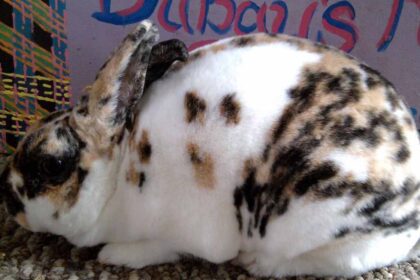

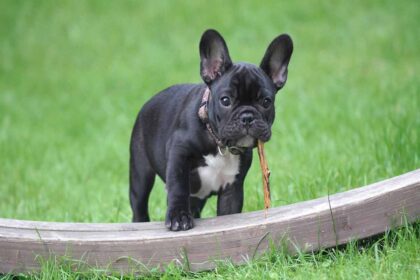
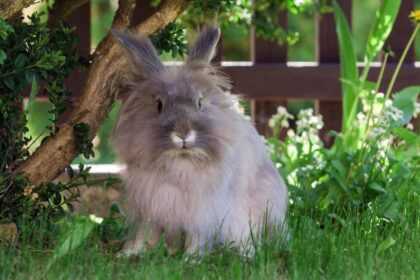
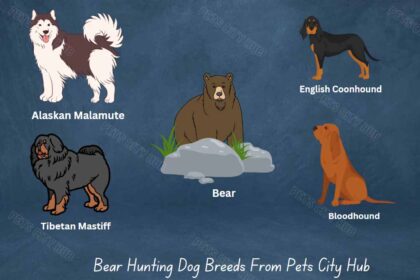


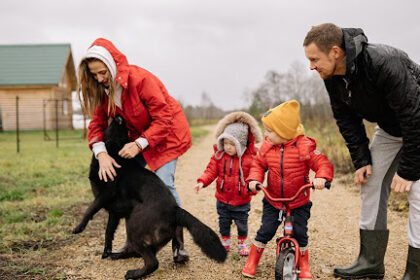


Comments are closed.